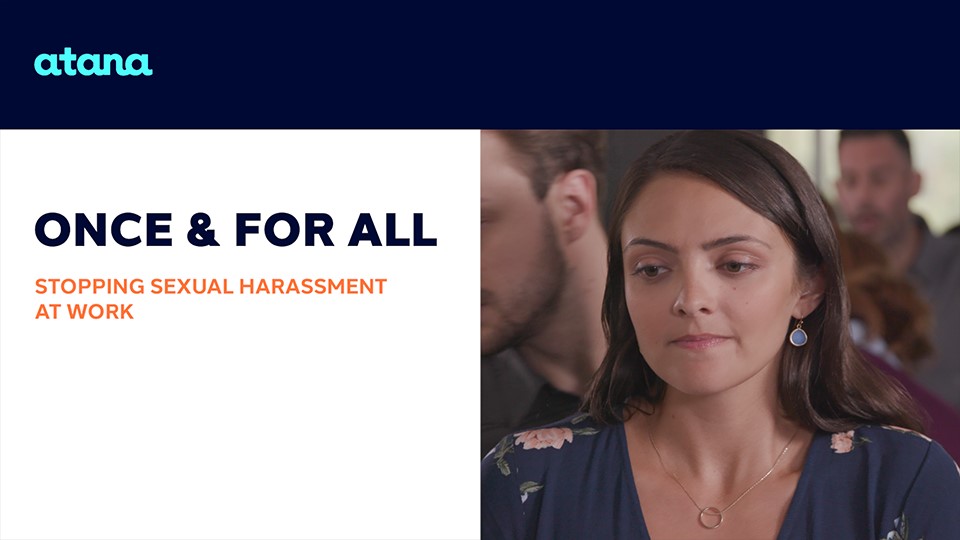
Evolving Standards for Sexual Harassment Training
If you’re responsible for your organization’s compliance to laws that ban harassment (especially sexual harassment) in the workplace—and related training—change is in the wind.
Although it may not yet have found its way to your state, the District of Columbia, Colorado, Maryland, and New York have already taken action to do what the National Law Review says “redefine[s] harassment laws with a standard that is more protective of employees” who must prove that unlawful activity took place at work.
It’s likely that other states will opt to make similar changes. So, it’s important to stay informed.
What's Changing - and Why
Under Title VII of the Civil Rights Act of 1964 and other legislation, certain forms of harassment constitute unlawful workplace discrimination. The EEOC (U.S. Equal Employment Opportunity Commission) explains harassment this way:
Harassment is unwelcome conduct that is based on race, color, religion, sex (including sexual orientation, gender identity, or pregnancy), national origin, older age (beginning at age 40), disability, or genetic information (including family medical history). Harassment becomes unlawful where 1) enduring the offensive conduct becomes a condition of continued employment, or 2) the conduct is severe or pervasive enough to create a work environment that a reasonable person would consider intimidating, hostile, or abusive.
It's that severe or pervasive standard that underlies the legal shifts in D.C., Colorado, and elsewhere. Proving that objectionable conduct is of a sufficient degree or widespread enough to constitute a hostile work environment has created stumbling blocks for employees who allege discrimination—particularly sexual harassment—under Title VII. As a result, their legal complaints are dismissed.
A recent George Washington Law Review article adds that “Requiring harassment to be ‘extreme’ is out of touch with current societal norms. …The severe or pervasive standard fails to acknowledge that even isolated, gender-based incidents can significantly alter the conditions of employment.”
“Requiring harassment to be ‘extreme’ is out of touch with current societal norms."
Further, inconsistent application of the Title VII language by courts across the United States has led to confusion and perpetuation of untenable workplace conditions and discriminatory practices. It is those situations and outcomes that states are attempting to address by relaxing the severe or pervasive standard.
What the Changes Mean for Employers
While only a handful of states have dropped the severe or pervasive standard so far, others will likely follow suit. That makes it wise for HR and training professionals to consider the implications for their organizations.


First, lowering the standard for a hostile work environment makes it easier for employees to bring legal actions and to prevail in their outcomes. Sources suggest that greater consistency in applying new standards in courts nationwide could also follow.
As more states consider and implement changes, media coverage of their actions will heighten awareness among employers and employees, placing renewed emphasis on appropriate versus inappropriate workplace behavior. A lower legal standard for a hostile environment means that a wider range of behaviors could become actionable.
With broader liability for potential legal action if workplace incidents go unaddressed, employers must be more disciplined about insisting on respectful conduct from all employees. A complete review and update of existing organizational policies and procedures related to harassment is an excellent first step in the wake of (or in anticipation of) changing laws.
Effective anti-harassment/anti-discrimination training will be an even more vital tool to educate workers and managers, protect employers from increased risk, and drive the kind of positive behavior change that leads to:
- Upstanders who speak up when harassment is experienced or witnessed.
- Staff members who actively maintain and reinforce professional boundaries.
- An overall culture of respect that yields higher employee morale, improved employee engagement, less turnover, and more bottom line benefits.
Atana’s instructional design team is preparing up-to-the-minute versions of our courses to ensure your organization of content that reflects your state’s latest laws and regulations. Contact Atana for information on state-specific updates of Once & For All, our 7x award-winning sexual harassment training course for employees and managers.








